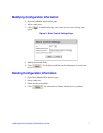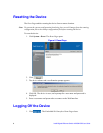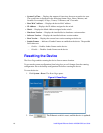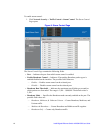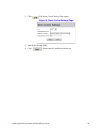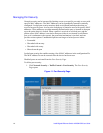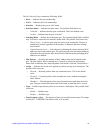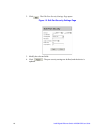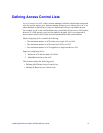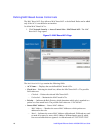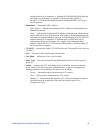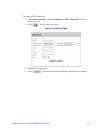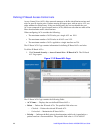Intel® Gigabit Ethernet Switch AXXSW1GB User Guide 15
The Port Security Page contains the following fields:
• Ports — Indicates the port membership.
• LAGs — Indicates the LAG membership.
• Interface — Displays the port or LAG name.
• Interface Status — Indicates the host status. The possible field values are:
— Unlocked — Indicates that the port is unlocked. This is the default value.
— Locked — Indicates that the port is locked.
• Learning Mode — Defines the locked port type. The Learning Mode field is enabled
only if Locked is selected in the Interface Status field. The possible field values are:
— Classic Lock — Locks the port using the classic lock mechanism. The port is
immediately locked, regardless of the number of addresses that have already
been learned.
— Limited Dynamic Lock — Locks the port by deleting the current dynamic MAC
addresses associated with the port. The port learns up to the maximum addresses
allowed on the port (See the Max Entries field). Both relearning and aging MAC
addresses are enabled.
• Max Entries — Specifies the number of MAC address that can be learned on the
port. The Max Entries field is enabled only if Locked is selected in the Interface
Status field. In addition, the Limited Dynamic Lock mode is selected. The default is 1.
• Action — Indicates the action to be applied to packets arriving on a locked port. The
possible field values are:
—Discard — Discards packets from any unlearned source. This is the default
value.
— Forward — Forwards packets from an unknown source without learning the
MAC address.
— Shutdown — Discards packets from any unlearned source and shuts down the
port. The port remains shut down until reactivated, or until the device is reset.
• Trap — Enables traps when a packet is received on a locked port. The possible field
values are:
— Enable — Enables traps.
— Disable — Disables traps.
• Trap Frequency (Sec) — The amount of time (in seconds) between traps. The range
is between
1–1,000,000. The default value is 10 seconds.



